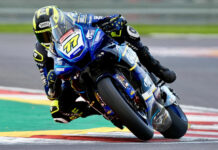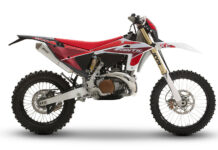FIRST PERSON/OPINION By David Swarts In January, AMA Pro Racing announced that it will implement a hardware price cap of $18,000 per motorcycle for engine control and data acquisition electronics in the Superbike class, beginning with the 2013 season and continuing through 2015. The only previous restriction required that hardware be homologated and approved for use by AMA Pro Racing Technical Director Of Competition Al Ludington. But teams say that hardware cost is not the biggest concern, with the cost of buying or developing software and hiring qualified technicians to run the complicated systems making up the bulk of the expense. Yoshimura Racing admits to spending $300,000 per season on electronics hardware, software, development, testing and personnel for its two-rider effort in AMA Pro Superbike. Yoshimura uses Magneti Marelli Marvel 4 systems and employs multiple technicians to run the systems. Monster Energy Graves Yamaha also runs Magneti Marelli Marvel 4 systems on its Superbikes and employs multiple technicians, but says one technician is assigned to run the Magneti Marelli SRT systems on its Daytona SportBikes. Jordan Suzuki and National Guard Suzuki use Pectel systems run by multiple technicians, while KTM uses Magneti Marelli SRT systems run by a technician who flies in from Italy for each AMA Pro Superbike round. Most of the other teams use much-less-expensive, much-less-capable, readily available race-kit black boxes (a.k.a. Engine Control Units, or ECUs) that sell for less than $3500 including wiring harness. Examples include Suzuki’s EM Pro system for GSX-R1000s and Yamaha’s YEC system for YZF-R1s. The BMW kit box for the S1000RR sells for about $4000 and plugs into the standard wiring harness. The Kawasaki kit box and wiring harness for the ZX-10R sell for less than $1500. A KTM kit box and setting tool for the RC8 R sells for under $1200. An EBR kit box for the 1190RS sells for $750. Meetings held as recently as last month between AMA Pro Racing officials and team representatives have revealed a deep divide in the paddock, with the majority of teams wanting to switch to kit boxes across the board, with a few notable holdouts. AMA Pro officials have openly admitted that they established the 2013-2015 rule now on the books based on one winning team’s threat to quit the series if it wasn’t allowed to continue using the Marvel 4 system currently fitted to its racebikes. To check where the top-10 players in the AMA Pro Superbike class stand on electronics rules, we posed the following questions: 1. What should the AMA Pro Superbike electronic rules be for 2013-2015 and why? 2. What do you say to someone who claims they need a year or more notice to get ready for any rule change, including switching from the currently allowed advanced electronics to kit boxes? Part Four: Mitch Hansen, Owner KTM/HMC Racing Riders, Chris Fillmore and Stefan Nebel Electronics, Magneti Marelli SRT “You already know my feeling and it’s KTM’s feeling that we would like to see the electronics [rule] wide open with no restrictions.” Why? “Obviously, I believe that Superbike is the premier class and we need to make sure we keep Superbike from becoming a Superstock class. I also know that KTM and HMC Racing has a lot of time already involved in developing our electronics system. That was one of the reasons our bike is competitive. I know we have a ways to go yet. And also there’s a lot of other teams out there, the Yamahas and the Suzukis, that have developed their systems over years and I just think we should continue with the systems as-is. I don’t believe it’s fair to take all of the development time and money that other teams have spent, even though they are my competitors, and just say we’re through.” If there were to be some sort of change in the electronics rules for 2013 and someone said they needed at least a year or more to prepare for those changes, what would you say to those people? “I agree with that. If we’re going to have to change our system and go elsewhere [in terms of equipment], I think you do need a year of development. What we’re doing right now is developing our system as we go, because obviously our program wasn’t given the green light until January. So things that we should have been developing over the winter we couldn’t do that. So now we’re developing on the run, and that’s not the way to do that.” To be continued…
Superbike Electronics: AMA Pro Team Managers Talk About What Rules Should Be For 2013 And Beyond, Part Four
Superbike Electronics: AMA Pro Team Managers Talk About What Rules Should Be For 2013 And Beyond, Part Four
© 2012, Roadracing World Publishing, Inc.





